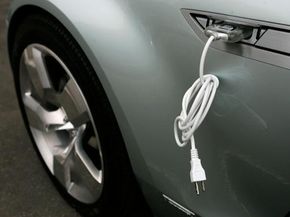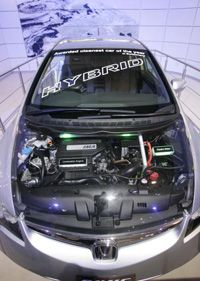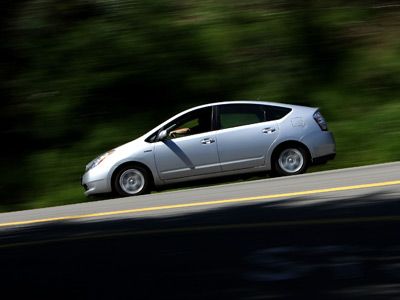Hybrid cars have become a popular alternative to traditional gasoline-only forms of transportation. These automobiles combine an internal combustion engine with a battery pack and electric motor. These additional components allow the vehicle to travel longer distances on less fuel and emit fewer emissions.
The battery pack consists of many small, low-voltage batteries called cells stacked on top of each other to create one larger high-voltage (HV) stick [source: Honda]. These sticks are then connected to form one high-voltage battery module. Most hybrids use a nickel-metal hydride (NiMH) battery pack that can both give and receive power; it gives power to the electric motor and receives power from the generator when recharging. On an eco-friendly note, these batteries can be recycled -- although car manufacturers are working on developing even greener batteries to use in their hybrids.
Advertisement
The amount of voltage in these cars, however small, has raised some concerns about driver and passenger safety. Specifically, what happens to that voltage in an accident? How safe is it for emergency personnel to extract an occupant or work with a hybrid at the scene of an accident? What happens when a hybrid gets submerged in water? We'll find out, starting on the next page.



